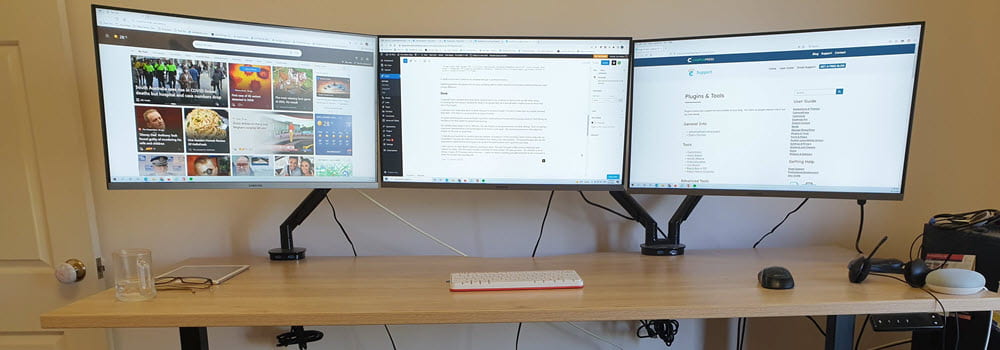New term has begun and out come the PDAs for the students to work with (PDAs are small pocket size computers that run mobile applications like mobile Word, Excel and Internet Explorer). Always fascinating to hear their response the first time they start using them, such as “Do we get to keep them?”, “How much do they cost?”, “Surely with the fees we pay we should get to keep them?”, “I have no hope of using one of these as I don’t even know how to use a computer” “Awesome – this is so cool”.
Why I use PDAs with students
I teach students how to identify fish diseases. This means they have to look under microscopes and be able to actually identify common parasites they see.

Using a PDA means they can:
- Look at color images of parasites
- Watch movies of what the parasite looks like under a microscope and how it movies.
When they study the anatomy of fish they can look at lots of colored photographs on the PDA as they do their dissections.
Last time I checked you can not achieve this with handouts, and PDAs definitely engaged students.
We have also discovered that having short videos (max. 5 mins) that show how to do a task e.g. how to tie a knot means that the student can watch the video at their own pace, stopping and starting as required, as many times as they like, while they do the skill. This means the lecturer can then focus on assisting students that need more help without the whole class having to wait.
Why we chose PDAs
Choose with m-learning is:
- Do you tap into mobile devices that students have
- Do you supply the mobile devices
For my class students needed to have a device that they could use next to a microscope or while they were dissecting fish. It needed to be small, reasonably cheap (so if something happened I would not cry too much), able to show videos and contain notes. Unfortunately not all students have a device that would meet these requirements so we needed to supply them.
Choices could have been a PDA or video ipod. However the PDA has more functionality in this situation and, one day wireless will be switched on in the College, and we will be able to use them to access the Internet in class.
I use a class set of twenty HP IPAQ rx1950 (no longer sold in Australia).

Downside of using PDAs are:
- Time spent charging the devices – however I have just purchased a unit that charges multiple PDAs at a time (can also use for ipods)
- Creating the material for the PDA – initially you do spend time setting up the material that you want the class to use. But really that is no different for creating any resource for class – it all takes time.
- I use cLaunch to put icons on the front screen of the PDA so students can easily access the required resource – this takes time on 20 devices
Here is a video that shows how I use PDAs with my students, the resources and their thoughts on the use of PDAs:




Leave a comment